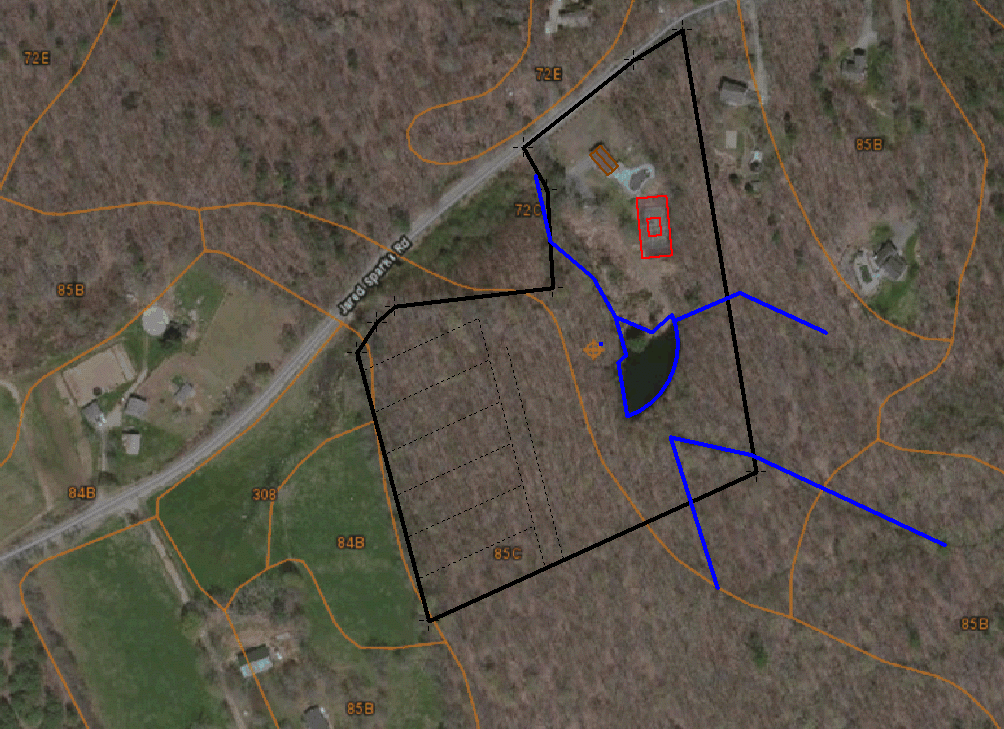posted 6 years ago
Hi Gene.
Your specific tools will depend on the degree of slope. Generally speaking, though, what is desirable is to look at how the land treats water. Left unchecked in a bad situation, water will make things worse, so we like to look for signs of erosion and work to prevent and combat that, as it usually represents a gradual loss of topsoil over time.
In wooded terrain, I would walk the land and identify spots that get eroded and place barriers in place to trap sediment and organic material, slowly building it back up.
Where there are flatter areas before a slope, I would put in some active measure to slow and stop water from just pouring downhill. This could be anything from a sediment trap made of deadfalls, logs, and branches laid on contour to a swale and a planted strip of soil-building and pollinator species suited to your spot, creating a slight raised lip to the flatter area, a lip with a moustache filter to catch sediment, that enhances the flatter area's ability to continue to trap sediment and organic material, and to increase water infiltration.
It might be noted that if you are to do any land forming, you should think about that sooner rather than later. In some situations, terracing is the best option for utility, though it is disruptive and complex. But they are versatile. A slope could be converted to narrow strips of pasture land, or to rice paddies, or to field crops, access permitting.
On steeper slope, I would still identify the contour, but would consider strategic access paths that would do as indicated and also act to slow the descent of water, planted as a swale and acting as a terrace-in-miniature, complete with the downslope lip and vegetative sediment barrier. In places where I wouldn't want to stick a path, or even a shovel, I would still identify the contour lines and put in sediment traps, even if they were just branches and logs that I staked in place on-contour.
So what I suggest, I suppose, is observation, followed by mitigation of damage, and more observation, and probably ongoing damage mitigation. If you keep the most of it planted, you run the best chance of it not visiting the neighbours downhill. Actively stopping or preventing erosion on your property will make hydrology work for you.
Beyond that depends on what you want to do with the property. If you could provide us with some idea as to what your aspirations on the land are, and where it is, and what challenges are inherent to that climate, it would be easier to make suggestions.
This, though, is an excellent question I wish more people thought to ask. Oftentimes property that is too steep for conventional farmers to bother working would be exceptionally well-suited to horticultural, rather than agricultural, approaches to food production.
Please keep us updated, and add pictures if you like. Good luck.
-CK
A human being should be able to change a diaper, plan an invasion, butcher a hog, conn a ship, design a building, write a sonnet, balance accounts, build a wall, set a bone, comfort the dying, take orders, give orders, cooperate, act alone, solve equations, analyze a new problem, pitch manure, program a computer, cook a tasty meal, fight efficiently, die gallantly. Specialization is for insects.
-Robert A. Heinlein








